Deer don’t check the thermometer in the morning when they wake up to determine how many layers to put on. Humans are the only mammals that care what temperature it is outside. The rest of the mammals that are active in winter are well-equipped to handle cold temperatures around the clock.
In the fall, many mammals that don’t hibernate or migrate molt into a winter coat. For some animals this means an entirely new coat of fur, such as snowshoe hares, and for others it means growing additional fur, such as porcupines.
Fur traps dead air next to an animal’s body and creates a blanket of insulation. More fur equals more insulation.
Animals that increase the density of their fur coat include beavers, red foxes, coyotes, mink, fishers, river otters, marten and weasels.
To stay even warmer, some mammals grow underfur. Porcupines grow a dark, woolly underfur that they shed in the spring.
Snowshoe hares and ermines (short-tailed weasels) molt into a white winter coat, not only for camouflage against predators, but also for insulation. A snowshoe hare’s white winter coat is 27 percent more insulating than its brown summer coat, in part to the density of the hairs but also the color.
Oddly enough white hair is more insulating than brown hair. Brown hair is filled with pigments to make the brown color. White hairs lack these pigments, giving them the white color, and nothing replaces the pigment except air. The air trapped within the hair provides additional insulation on top of the air trapped between the hairs. More trapped air means greater warmth, just like a thicker down jacket or sleeping bag.
Less conspicuous are the ungulates, such as deer and moose, who also change their hair structure from solid to hollow with the winter molt. Even though the pigment remains in deer, the hollow-shafted winter hair keeps them warm to minus 30 degrees Fahrenheit. Polar bears and wolves also have hollow-shafted hair.
The mountain goat combines several of these strategies, including growing a double coat of white fur. Before the first snowfall, a mountain goat will grow a fine, dense undercoat of woolly fur that is more than three inches thick. The undercoat is then covered by a thick layer of hollow, seven-inch-long guard hairs that also partially covers the legs. This extreme winter coat allows the goat to withstand winter temperatures as low as minus 50 degrees Fahrenheit and winds as high as 100 miles per hour.
Thick fur is not always advantageous. Predators like weasels have to compromise between warmth and agility. If ermines had thick fur, they wouldn’t be able to squeeze into crevices and tunnels in the snow after their prey.
Some small prey, such as mice, don’t grow a thick winter coat. They rely on other winter adaptations to survive, such as living in the subnivean zone (beneath the snow) where the temperature stays just above freezing.
But for animals exposed to cold temperatures, a winter coat is one of the ways they keep warm, just like us.

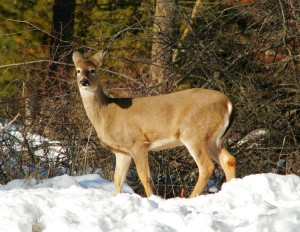
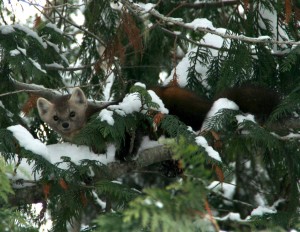
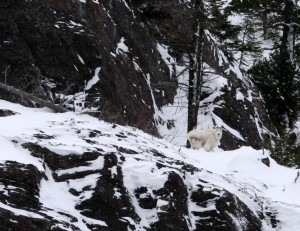
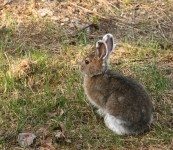
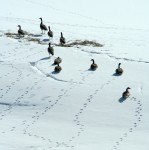

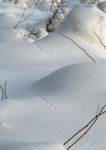
Hi! Your blog is terrific! I'm a first year student in biology and found your blog because I wanted to find out how it is that white fur is favoured over coloured fur for thermoregulation.
From my understanding, the hair shaft itself looses its pigment and the vacancy is filled with air. Does this loss of pigment result in a solid hair shaft morphing into a hollow hair shaft? (As seen in the polar bear?)
Hi Shan,
Yes, the loss of pigment results in a hollow hair shaft that fills with air. The trapped air inside the hair shafts add an extra layer of insulation in addition to the air between the hair shafts. Polar bears and wolves both have hollow hair shafts, as well as white-tailed deer and moose in the winter.
In terms of fur color, one mammalogy book said "According to the laws of physics, black-colored animals lose heat by radiation faster than white-colored ones", which provides one more reason why white hair is favored.
Have fun with your studies. Biology is fascinating.
Nice article, but should read to “negative” 30 degrees. Numbers are positive and negative while operations are plus and minus.